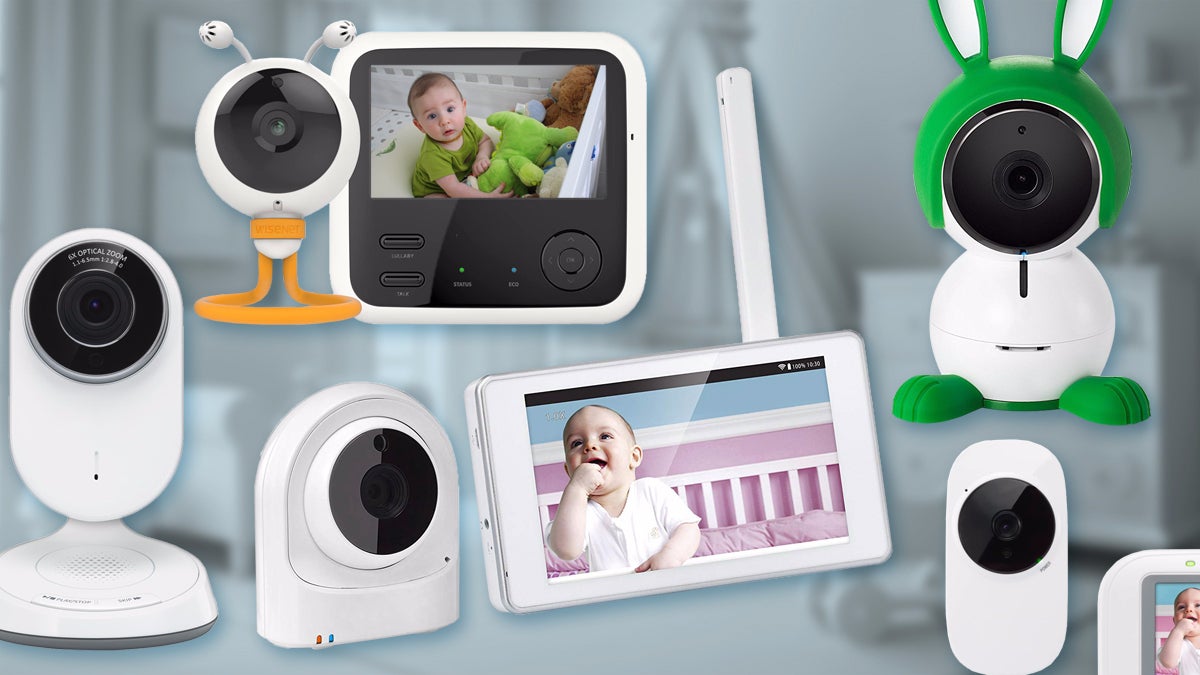The best video baby monitors: Keep eyes—and ears—on your bundle of joy
 Rob Schultz / IDG
Rob Schultz / IDG
Video baby monitors have a singular purpose: to bring parents, particularly nervous new ones, peace of mind. By transmitting audio and video, they allow moms and dads to keep eyes and ears on their snoozing little ones, so they can get things done or just get a good night’s sleep.
But these nursery essentials can be as fussy as the babies they keep tabs on. And like virtually every other household appliance, they are growing increasingly more capable and complex. In addition to conventional video baby monitors that use a camera and a handheld LCD display, often called a “parent unit,” there are now also Wi-Fi-enabled systems that connect to your home network and use your smartphone as both the display and the controller, much like DIY home security cameras. These latter models offer high-defition video, intelligent alerts, and the ability to check on your child from anywhere you have an internet connection.
To help you find the best video baby monitor for your family’s needs, we’ve outlined some key features to look for, and we will continue to share the results of our testing. Here are our current top picks, followed by a buyers’ guide that will help you identify your wants and needs if our picks don’t match what you’re looking for. And if you scroll down to the bottom of the page, you’ll find links to all of our latest video baby monitor reviews.
Updated March 4, 2019 to add our review of the Motorola Halo+ baby monitor. We like this product quite a bit, but its $299 price tag prevented it from knocking out any of our current top picks in this category.
Best video baby monitor
Netgear brought the best features of its Arlo line of home security cameras to its first baby monitor. That includes Full HD video, night vision, sound and motion detection, two-way audio, 24/7 recording, and free cloud storage. Netgear also used feedback from Arlo owners to add a nursery-centric spin to the Arlo Baby, with a multicolored LED nightlight, a built-in music player with nine lullabies, environmental sensors, and artificial intelligence that can recognize your child’s cries.
Runner up
This baby monitor system lets you listen in on your child with a “smart audio unit,” or you can install the Safety 1st companion app to turn your smartphone into a video display, complete with motion and audio alerts. While it lacks some of the nonessential features of the Arlo Baby, we give it high marks for its excellent video quality, customizable alerts, and its ability to grant regulated camera access to other caretakers.
What to look when buying a video baby monitor
If our top picks don’t match your budget or your needs, this guide will help you understand all the features you’ll encounter in your search for the perfect video baby monitor, so you narrow the field to find exactly what you’re looking for.
Motion and audio sensors: In the old days, parents were forced to endure a consistent ambient hiss from their audio monitors while they listened for their child’s stirrings or cries. Mercifully, many modern baby monitors will stay in “quiet mode” until they detect motion and/or sound, which will trigger an alert, such as activating the handheld video display or pushing a notification to your smartphone.
Rechargeable batteries: Since the camera will most likely stay trained on your bundle of joy, it can remain plugged into AC power. But parent unit displays are designed to be always on and carried with you as you move from room to room. That can drain batteries quickly. Look for a parent unit that runs on rechargeable batteries, so you’re not constantly swapping them out.
Night vision: Because much of the time you’ll be checking on your child after dark, most video baby monitors include infrared LEDs that automatically turn on in low light. The trick is to make sure they illuminate just enough that you can see your child without the light waking him or her.
Two-way talk: If your child does start prematurely stirring from their sleep, the last thing you want to do is risk waking them fully by walking into the room to settle them. Baby monitors often include a push-to-talk microphone you can activate from the parent unit or your smartphone to remotely soothe your child with your voice.
Environmental sensors: Many monitors include the ability to set thresholds and upper limits for room temperature and/or humidity, and they’ll alert you when these ranges are exceeded. While they can’t control the temperature or the amount of moisture in the room’s air, this feature can help you improve your child’s comfort, which will help them get more restful sleep.
Lullabies: Monitors often include a selection of soothing sounds to help your baby drift off to slumberland. These can be traditional nursery rhymes of the rock-a-bye-baby variety, nature sounds, white noise, or some combination of all of them. It’s a good idea to check them out before you play them to your sleeping child to determine whether they might help or hinder their sleep.
Our latest video baby monitor reviews